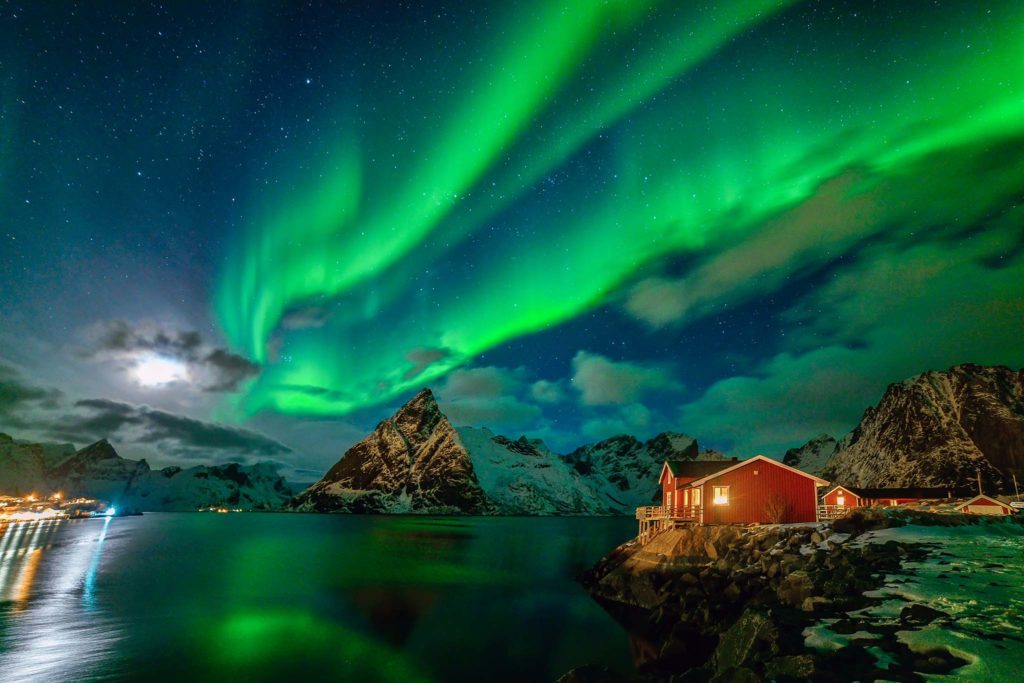The Northern Lights, scientifically known as the Aurora Borealis, are one of nature’s most captivating and mesmerizing displays. These ethereal curtains of light dancing across the night sky have intrigued and fascinated both scientists and travelers for centuries. To witness this awe-inspiring phenomenon, it is crucial to understand the best locations and times of year that offer the greatest chances of experiencing the Northern Lights in all their glory. Let’s explore the prime destinations and optimal times to witness this celestial spectacle.

When is the best time to see the Northern Lights?
Most online resources will tell you that the best time to see the spectacle is from late August to late April. This is technically true, but there are a couple more things you should take into account. The best time to see the Aurora is largely dependent on how long the day is. In the summer, the Sun almost never sets in the Arctic Circle, so the chances of seeing the Lights in June or July are almost non-existent.
The months with the best chances of seeing the Lights are from September to April, as the nights are the longest. But you also need to consider that December and January are almost always engulfed in darkness in the Arctic Circle, so you won’t have many other activities to do.
We recommend you plan your Northern Lights trip in September – November, or in February – April.
If I would pick the two best months to see the Lights, I would pick October and March. Plenty of opportunities for Lady Aurora to show herself, but also some daylight for other activities.
What are the best locations for the Aurora Borealis?
Fairbanks, Alaska, United States
Known as the “Golden Heart City,” Fairbanks in Alaska is a renowned hotspot for Northern Lights enthusiasts. With its location within the auroral oval, which is a ring-shaped region encircling the geomagnetic pole, Fairbanks offers excellent opportunities for viewing the lights.
Iceland
Iceland has emerged as a popular destination for chasing the Northern Lights. Reykjavik, the country’s capital, provides a convenient base for exploring this natural phenomenon. Of course, you can see the Northern Lights from many locations across the island, and you’d best plan a longer visit to enjoy the geothermal hot springs and dramatic landscapes, as well.
Tromsø, Norway
Tromsø, located in the Arctic Circle, is another remarkable destination for witnessing the Northern Lights. With its relatively mild climate and accessibility, it attracts a large number of visitors each year. Visitors can also partake in various winter activities like dog sledding and reindeer sleigh rides during their stay.
Lofoten Archipelago, Norway
Lofoten is another great location in Norway to witness the Aurora Borealis, but it differs a bit from Tromsø. Being an archipelago, your movement will be restricted by its geography (narrow islands and tall mountains). Moreover, being in the Arctic Sea, the weather is treacherous and very changing. You can expect more clouds and storms, and generally fewer chances for clear skies to view the Lights.
Lofoten is also a photographer’s paradise and is very well known for its amazing landscape views.
We’ve had a great time hunting them in Lofoten, but if I only wanted to see them I would probably chose another destination from this list.
Abisko, Sweden
Situated in the pristine wilderness of Swedish Lapland, Abisko National Park offers exceptional conditions for viewing the Northern Lights. Its unique microclimate and location in a rain shadow make it a “blue hole” where clouds tend to disperse, resulting in clear skies.
Yellowknife, Canada
Yellowknife, the capital city of Canada’s Northwest Territories, is renowned for its uninterrupted views of the Northern Lights. Located directly under the auroral oval, Yellowknife benefits from minimal light pollution, making it an ideal location for stargazing.
To behold the captivating spectacle of the Northern Lights is to immerse oneself in an otherworldly experience, and a must-see for anyone, at least once in life. While nature’s whims can never be guaranteed, the aforementioned destinations offer some of the best opportunities to witness the Aurora Borealis in all its glory. Remember to plan your visit during the optimal months and be prepared for long nights, clear skies, and a touch of luck.
If you want to see the Northern Lights daily, without living in the Arctic Circle, or perhaps decorate your living space with some amazing scenery, check out or Store.
